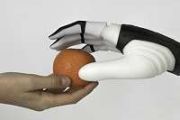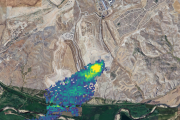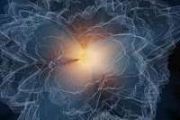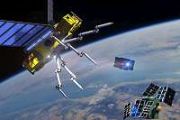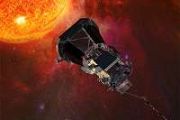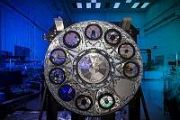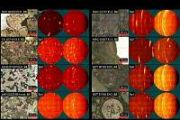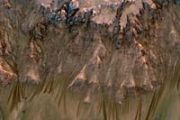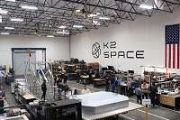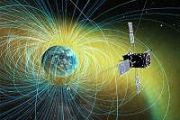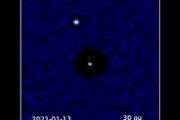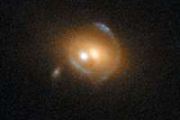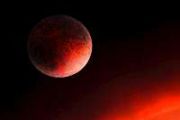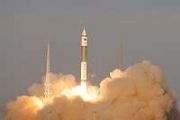
Copernical Team
Two new satellites mark further enlargement of Galileo
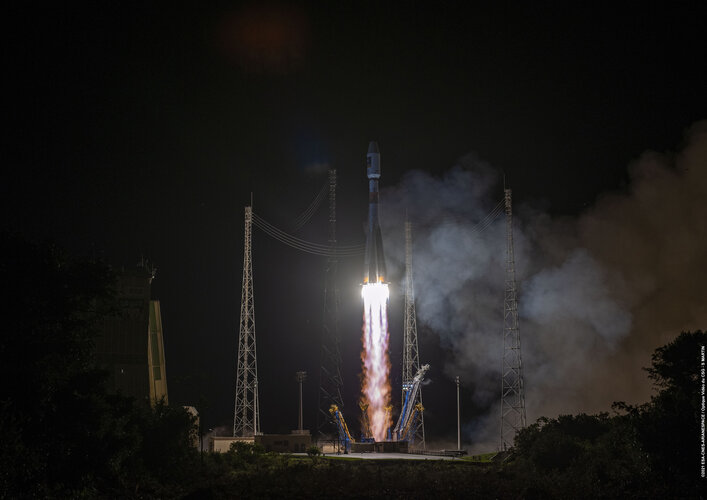
Europe’s largest satellite constellation has grown even bigger, following the launch of two more Galileo navigation satellites by Soyuz launcher from Europe’s Spaceport in French Guiana on 5 December. Galileo satellites 27-28 add to an existing 26-satellite constellation in orbit, providing the world’s most precise satnav positioning to more than 2.3 billion users around the globe.
TESS discovers a planet the size of Mars but with the makeup of Mercury
 Ultra-short-period planets are small, compact worlds that whip around their stars at close range, completing an orbit - and a single, scorching year - in less than 24 hours. How these planets came to be in such extreme configurations is one of the continuing mysteries of exoplanetary science.
Now, astronomers have discovered an ultra-short-period planet (USP) that is also super light. The
Ultra-short-period planets are small, compact worlds that whip around their stars at close range, completing an orbit - and a single, scorching year - in less than 24 hours. How these planets came to be in such extreme configurations is one of the continuing mysteries of exoplanetary science.
Now, astronomers have discovered an ultra-short-period planet (USP) that is also super light. The Lunar radar data uncovers new clues about moon's ancient past
 The dusty surface of the moon - immortalized in images of Apollo astronauts' lunar footprints - formed as the result of asteroid impacts and the harsh environment of space breaking down rock over millions of years. An ancient layer of this material, covered by periodic lava flows and now buried under the lunar surface, could provide new insight into the Moon's deep past, according to a team of s
The dusty surface of the moon - immortalized in images of Apollo astronauts' lunar footprints - formed as the result of asteroid impacts and the harsh environment of space breaking down rock over millions of years. An ancient layer of this material, covered by periodic lava flows and now buried under the lunar surface, could provide new insight into the Moon's deep past, according to a team of s High-Speed Lunar Surface Transportation
 Proposed lunar surface mobility systems for human colonization appear to be severely limited in speed and payload capabilities. Roving vehicles are massive and move slowly over the rough lunar terrain, at a high cost of energy and life support supplies.
Flying units, powered by chemical rockets are fast, but the price of speed is payload and range. On the other hand, a hopping transporter
Proposed lunar surface mobility systems for human colonization appear to be severely limited in speed and payload capabilities. Roving vehicles are massive and move slowly over the rough lunar terrain, at a high cost of energy and life support supplies.
Flying units, powered by chemical rockets are fast, but the price of speed is payload and range. On the other hand, a hopping transporter Ingenuity heading north into Seitah for Flight 17
 With Flight 17, Ingenuity continues its journey back to Wright Brothers Field at the Octavia E. Butler landing site. Flight 17 is the third flight of this journey and is scheduled to take place no earlier than Sunday, Dec. 5 with the data arriving back on Earth no earlier than later that same day.
Flight 17 is approximately half of Flight 9 in reverse, which was one of the most challenging
With Flight 17, Ingenuity continues its journey back to Wright Brothers Field at the Octavia E. Butler landing site. Flight 17 is the third flight of this journey and is scheduled to take place no earlier than Sunday, Dec. 5 with the data arriving back on Earth no earlier than later that same day.
Flight 17 is approximately half of Flight 9 in reverse, which was one of the most challenging NASA awards Artemis contract for future SLS boosters
 NASA has awarded the Booster Production and Operations Contract (BPOC) to Northrop Grumman of Brigham City, Utah, to build boosters for the agency's Space Launch System (SLS) rocket to support nine SLS flights. Northrop Grumman, the lead booster contractor, has produced booster motors for the first three Artemis missions and is casting the motors for the fourth lunar mission.
This contract
NASA has awarded the Booster Production and Operations Contract (BPOC) to Northrop Grumman of Brigham City, Utah, to build boosters for the agency's Space Launch System (SLS) rocket to support nine SLS flights. Northrop Grumman, the lead booster contractor, has produced booster motors for the first three Artemis missions and is casting the motors for the fourth lunar mission.
This contract NASA astronauts complete ISS spacewalk
 Two NASA astronauts have completed the 13th spacewalk at the International Space Station (ISS) this year, the agency said, days after the event was postponed over a debris risk.
Astronauts Thomas Marshburn and Kayla Barron headed outside the space laboratory on Thursday, replacing a faulty antenna and restoring its capability.
"It was awesome!" Barron said after completing her first spac
Two NASA astronauts have completed the 13th spacewalk at the International Space Station (ISS) this year, the agency said, days after the event was postponed over a debris risk.
Astronauts Thomas Marshburn and Kayla Barron headed outside the space laboratory on Thursday, replacing a faulty antenna and restoring its capability.
"It was awesome!" Barron said after completing her first spac Eutelsat's Konnect Africa and Vodacom Partner to Bring High-Speed Broadband to Unserved Regions of Tanzania
 Eutelsat Communications and Vodacom Tanzania PLC have signed a service agreement for packaged services to bring connectivity to underserved regions of Tanzania, leveraging Eutelsat's EUTELSAT KONNECT high-throughput satellite.
Following a successful Proof of Concept trial, Vodacom will commercialize services on the EUTELSAT KONNECT satellite under its own brand, building out its service of
Eutelsat Communications and Vodacom Tanzania PLC have signed a service agreement for packaged services to bring connectivity to underserved regions of Tanzania, leveraging Eutelsat's EUTELSAT KONNECT high-throughput satellite.
Following a successful Proof of Concept trial, Vodacom will commercialize services on the EUTELSAT KONNECT satellite under its own brand, building out its service of Space Development Agency Approves L3Harris' Missile-Tracking Satellite Design
Exploring the heart of space weather with the Geospace Dynamics Constellation
 The Geospace Dynamics Constellation mission - or GDC - is a team of satellites that will study Earth's upper atmosphere and provide the first direct global measurements of our planet's dynamic and complex interface with the space environment. This boundary between Earth's atmosphere and space is called the ionosphere-thermosphere (I-T) system.
This mission will change our understanding of
The Geospace Dynamics Constellation mission - or GDC - is a team of satellites that will study Earth's upper atmosphere and provide the first direct global measurements of our planet's dynamic and complex interface with the space environment. This boundary between Earth's atmosphere and space is called the ionosphere-thermosphere (I-T) system.
This mission will change our understanding of 








